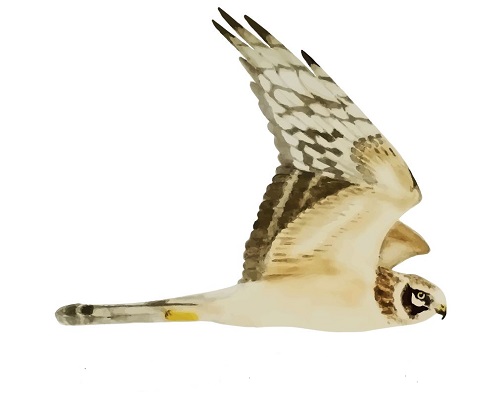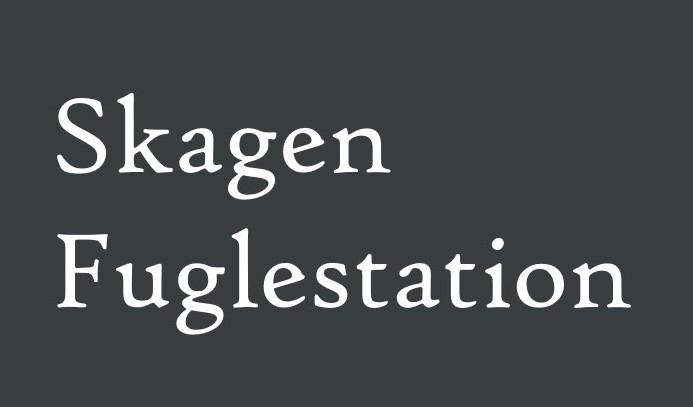Her på Skagen Fuglestations blog bringes korte nyheder i dagbogsformat om hændelser på fuglestationen.
Se indlæg fra måned: feb. (16)mar. (30)apr. (30)maj (31)juni (30)juli (31)aug. (31)sept. (30)okt. (31)nov. (29)dec. (11)
Windy Mornings Can Be A Challenge
In Ragnar’s absence, I woke up later (04:40 AM) than the ringing crew (03:45) and headed out to Worlds End 1 to begin the days morning observation count. After a few relatively unproductive days from Worlds End 3, I thought I would switch it up and try my luck with others here. The first hour was relatively slow with only a few fulmars (Mallemuk) and a handful of Northern Gannets (Sule), but as the morning progressed, it slowly picked up speed. As did the wind. By the end of the morning, it topped out at 14 m/s. An adult dark morph Arctic Skua (Almindelig Kjove) and several species of alcids (alkefugl) were nice consolation prizes, but unfortunately, nothing crazy rare went by continental Denmark's northern most migration hotspot.
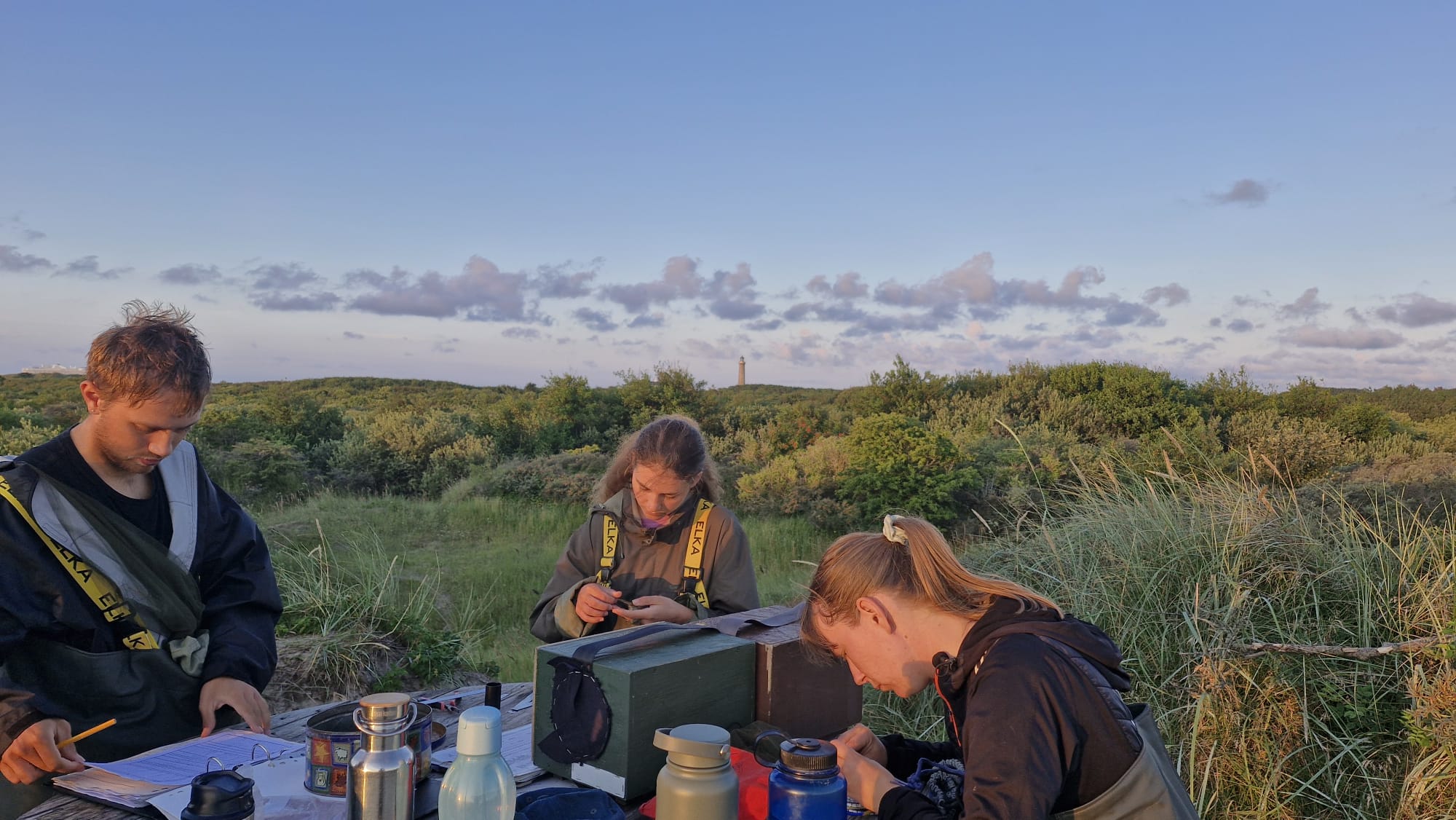
On the ringing front, the ringers finally got an extra 15 minutes of sleep as we adjusted the first round time by 15 minutes. Unfortunately, the extra sleep did not help them as they were only able to keep the nets open for four rounds before the wind and lack of productively were simply too much to justify keeping the nets open. The whole crew returned to the station by 09:30 and began completing some chores around our home away from home. Data was entered, photos in the archive were adjusted and the station cleaned. This was all in preparation for tonight as we will try once again to ring European Storm-Petrels (Stormsvale). And so, another day at Skagen Fuglestation passes, what will tomorrow morning (tonight) bring – we will have to wait and see.
Ringing (Kabeltromlen)
Common Whitethroat (Tornsanger) - 2
Blackcap (Munk) - 1
Chiffchaff (Gransanger) - 2
Total: 5
People at SKAF: Lucas Corneliussen, Rosa Hicks, Joe Zeno, Simon Christiansen, Asia Kane, Mette Møller Christiensen
Link to today's observations from observers in the area
Gulls, terns, and waders on a windy day
Hello everyone!
Today I was on observation duties, so early in the morning I biked out to World’s End 3 to look for anything interesting that was around the tip of Denmark. For the first hour of observation, I was alone, but after an hour Knut Peterson joined me to look for seabirds. In the first hour I spotted two Little Terns (Dværgterne) foraging along the coast, a solid bird for the Skagen area. As he arrived, Knut informed me of a Ruff (Brushane) and two Temmink’s Stints (Temmincksryle) in a nearby pond. I temporarily left my post to observe these shorebirds and I encountered a Curlew Sandpiper (Krumnæbbet ryle) and a Red Knot (Islandsk ryle ) as well. Returning to World’s End 3 we were met with not many migrants as the winds were quite strong today with a Caspian Gull (Kaspisk någe) being the highlight of the final few hours. At the end of our count, we were able to read a few color rings on Lesser Black-backed Gull (Sildemåge) and Great Black-backed Gull (Svartbag).
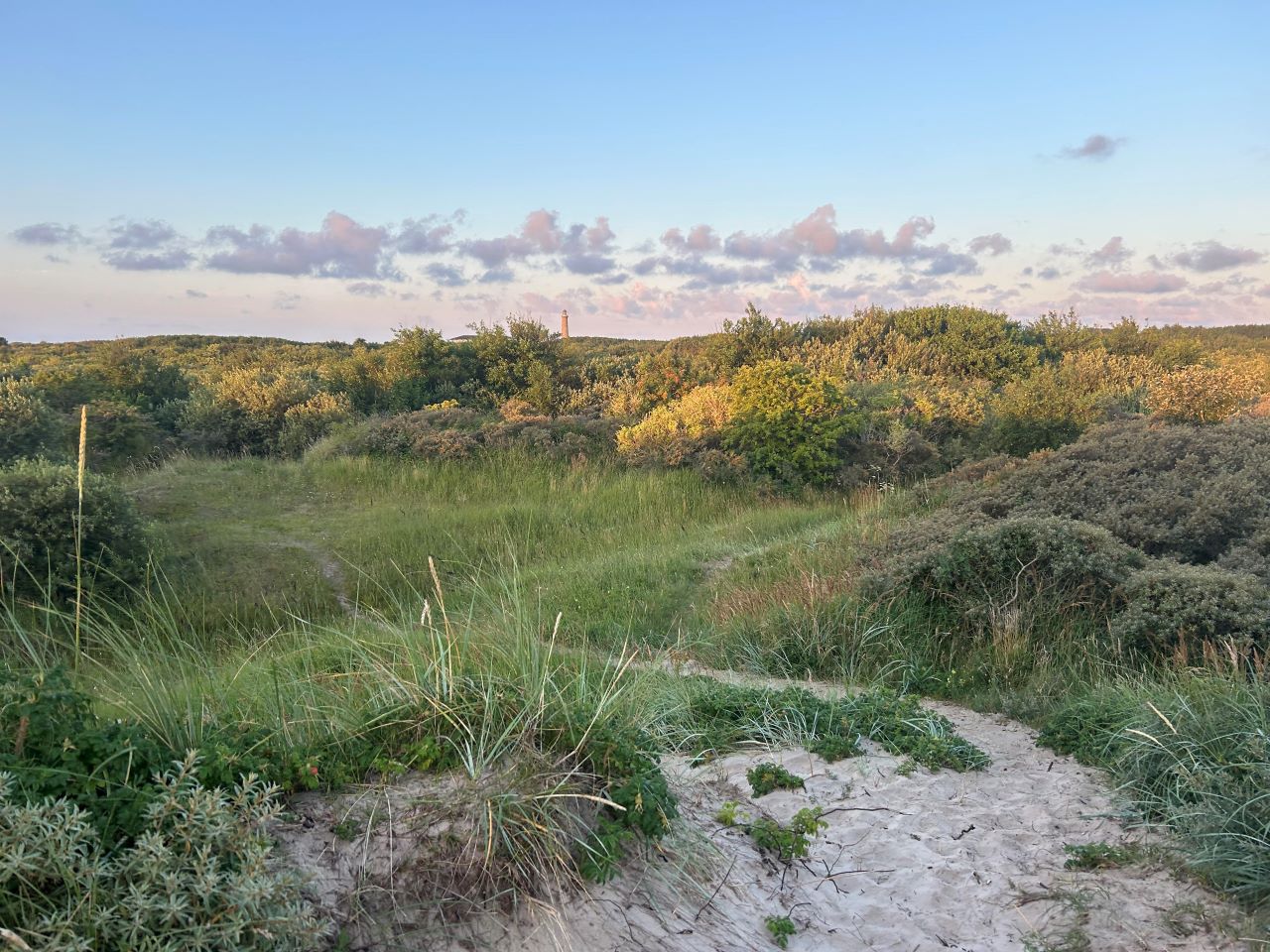
Today the ringers were back at Kabeltromlen after ringing at the CES site the day before. It was a windy day, but the ringing still commenced. A total of 9 birds were rung, and it was a good day for Chiffchaffs (Gransanger) as 6 were caught. A couple other birds including a Common Whitethroat (Tornsanger) and a Lesser Whitethroat (Gærdesanger) ended up in the nets as well. In a few days the winds are expected to calm down and hopefully this means we will get more birds!
Ringing (Kabeltromlen)
Chiffchaff (Gransanger) – 6
Reed Warber (Rørsanger) – 1
Lesser Whitethroat (Gærdesanger) – 1
Common Whitethroat (Tornsanger) - 1
Willow Warbler (Løvsanger) - 1
Total: 10
People: Rosa Hicks, Asia Kane, Joe Zeno, Simon S. Christiansen, Lucas Cornelliussen
A productive day at Skarvsøen
Hello all!
Today Rosa, Joe, and I were up bright and early to head to our CES site. It had been a while since our last visit, and we were interested to see if many new birds would be caught today. The ringing today went better than the last few days at Kabeltromlen – we caught a good number of birds, including recaptured breeding adults and new juvenile birds. Most of the birds caught were Rørsangers (Reed Warblers).
We were later joined by our guest Lærkebjørn, who kindly brought us the battery for the hedge trimmer as we had forgotten it at the station. When we had some time between rounds, we refreshed our understanding of moult strategies with Simon to help us remember the details of yesterday’s talk.
After we had closed the nets, we used the hedge trimmer to remove the reeds and other plants that were obstructing the net lanes. We finished half of the nets today, and will do the rest soon.
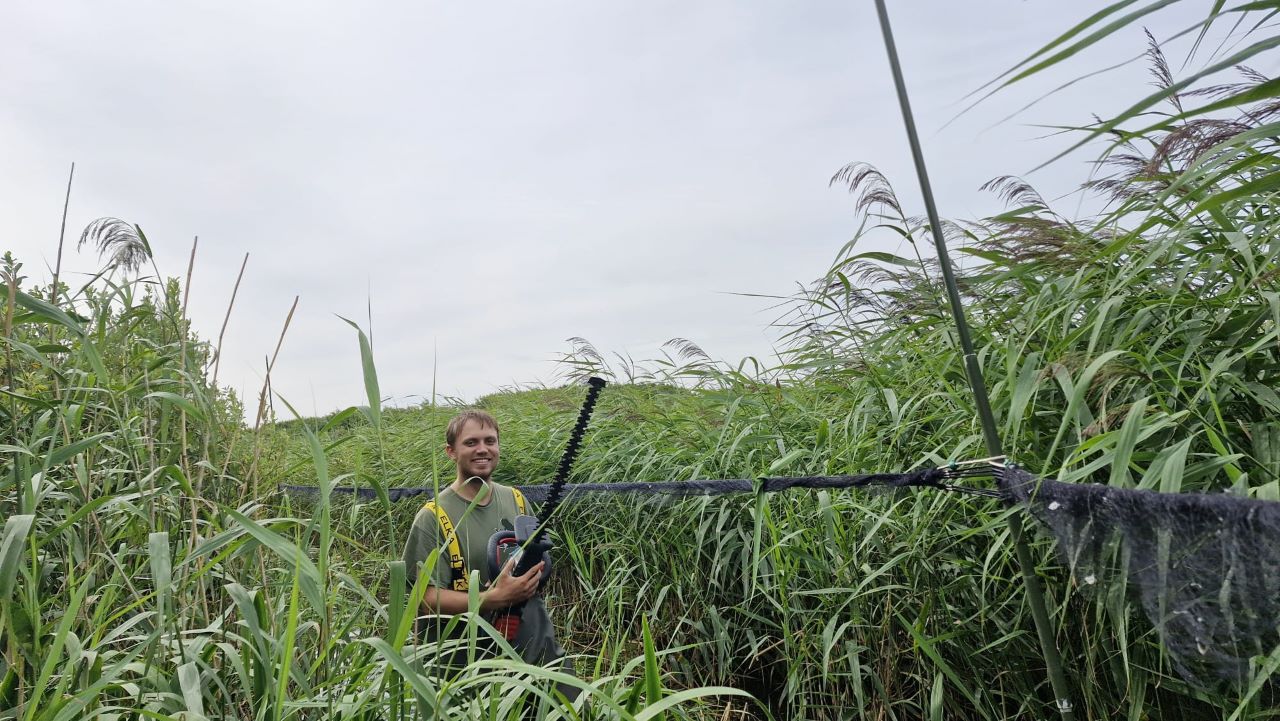 Joe hard at work with the hedge trimmer!
Joe hard at work with the hedge trimmer!
Meanwhile, Lucas was carrying out the day’s observations. He had a slow day, but saw a flock of roughly 200 Sule (Gannets) and a Storkjove (Great Skua). In the afternoon, he went for a refreshing swim in the ocean.
Tomorrow we are back to ringing at Kabeltromlen. It will be interesting to see what we catch!
Ringing (Skarvsøen CES):
Blåmejse (Blue Tit): 2
Gransanger (Chiffchaff): 2
Munk (Blackcap): 2
Rørsanger (Reed Warbler): 8
Tornsanger (Common Whitethroat): 2
Total: 16
People: Lucas Corneliussen, Joe Zeno, Rosa Hicks, Asia Kane, Simon S. Christiansen, Lærkebjørn
How old is it?
Hello everyone!
Today was a very windy day. Rosa and I got up bright and early to open the mist nets. With the nets up before sunrise, we set up the ringing station at Kabeltromlen with Simon and Asia and got ready to catch birds. As the sun reached the horizon, we started checking the nets. Almost immediately we noticed some of the nets were being blown in the wind quite heavily, allowing birds to see the nets and evade them. We made the decision to close the nets that were heavily impacted by the wind because they would be less productive, and it would keep birds that were caught from getting too tangled in the nets. Early in the session we caught a Song Thrush (Sangdrossel), a lifer for me! Later, we caught a Common Reed Warbler (Rørsanger), Lesser Whitethroat (Gærdesanger), Marsh Warbler (Kærsanger), Chiffchaff (Gransanger), and Lesser Redpoll (Lille Gråsisken). Simon also took us to see a local species of orchid that blooms during this time of the summer.

Pictured is a local orchid species (Sump-hullæbe) near Kabeltromlen
Lucas got up at 4:30 to head out to World’s End 3 for observations. The day was starting slow, but his spirits were heightened when he spotted a Black Tern (Sortterne) foraging over the ocean. He also noted a Litle Gull (Dværgmåge) resting on the beach.
In the afternoon, Simon brought us all together for a discussion on Ethics in Ringing and on using moult to age birds. Concerning ethics, we discussed a variety of topics including the risk factors with ringing birds, considerations that ringers must make, and routines that ringers at Skagen partake in. In the second part of the discussion, we discussed different groups of birds’ molt strategies and how this can impact how we age the birds during different seasons. We practiced with a few examples as seen above in the image of Rosa and Asia describing the age of a bird by observing feathers on its wing.
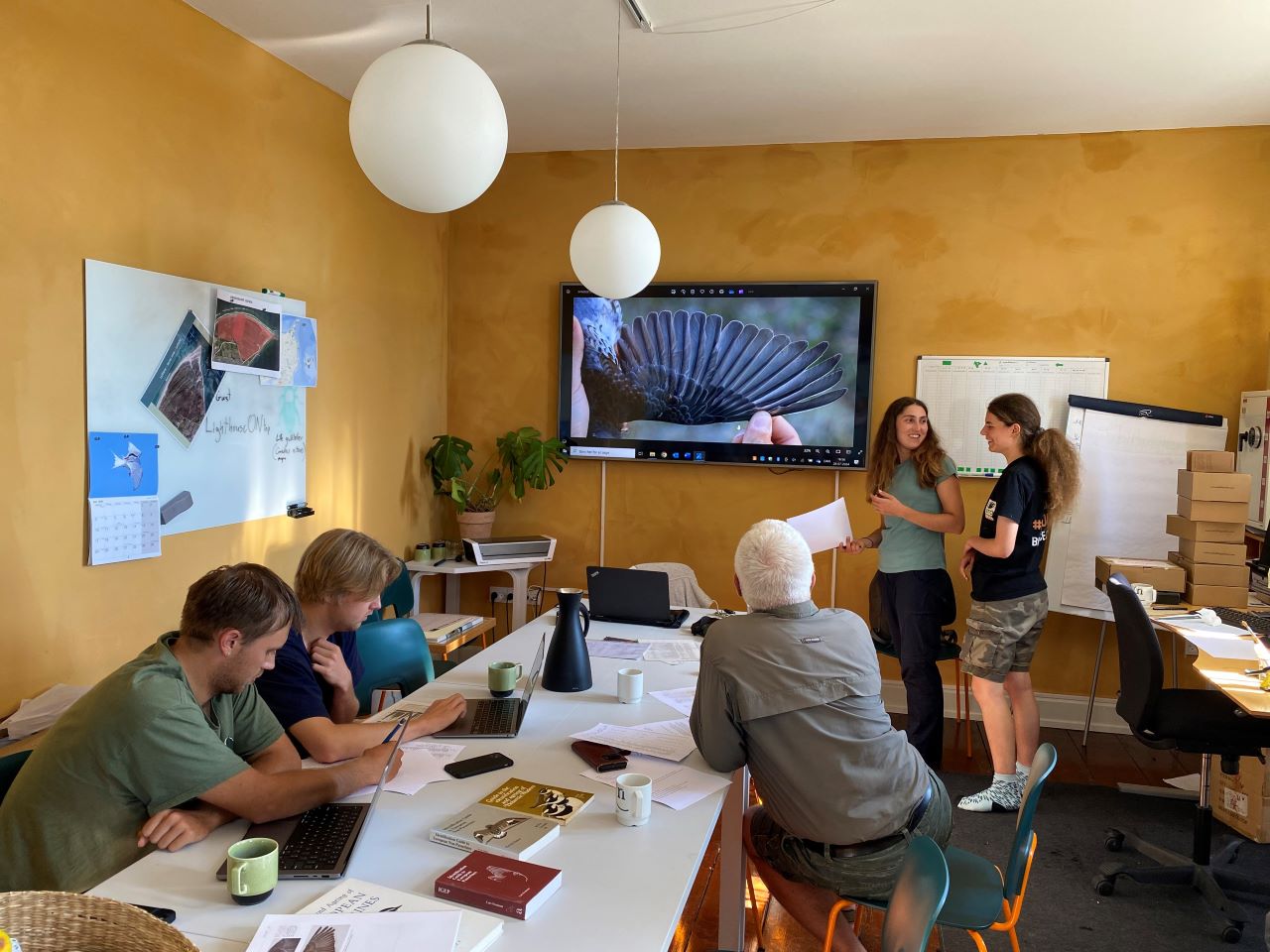
Pictured above is Asia and Rosa describing the moult on the wing of a bird
We are expecting more windy weather for the next few days and hopefully that means we will be seeing more migrants and new birds to showcase here on the blog!
Ringing (Kabeltromlen)
Song Thrush (Sangdrossel) - 1
Chiffchaff (Gransanger) - 1
Lesser Redpoll (Lille Gråsisken) - 1
Marsh Warbler (Kærsanger) - 1
Reed Warbler (Rørsanger) - 1
Lesser Whitethroat (Gærdesanger) - 1
Total: 6
Link to observations in the area today
People at the station: Lucas Corneliussen, Joe Zeno, Rosa Hicks, Asia Kane, Simon S. Christiansen, Lærkebjørn, Michael Anker, Oluf Lou
Birds and Dragons in the Nets
Hi all!
A lovely sunning morning at Grenen was accompanied by a nice selection of birds for the ringing team – including crested tit (Topmejse), reed bunting (Rørspurv), spotted flycatcher (Grå Fluesnapper), adult male lesser redpoll (Lille Gråsiskin), and a redwing (Vindrossel), which was moulting its primary flight feathers and had a brood patch, meaning it must have bred in the region!
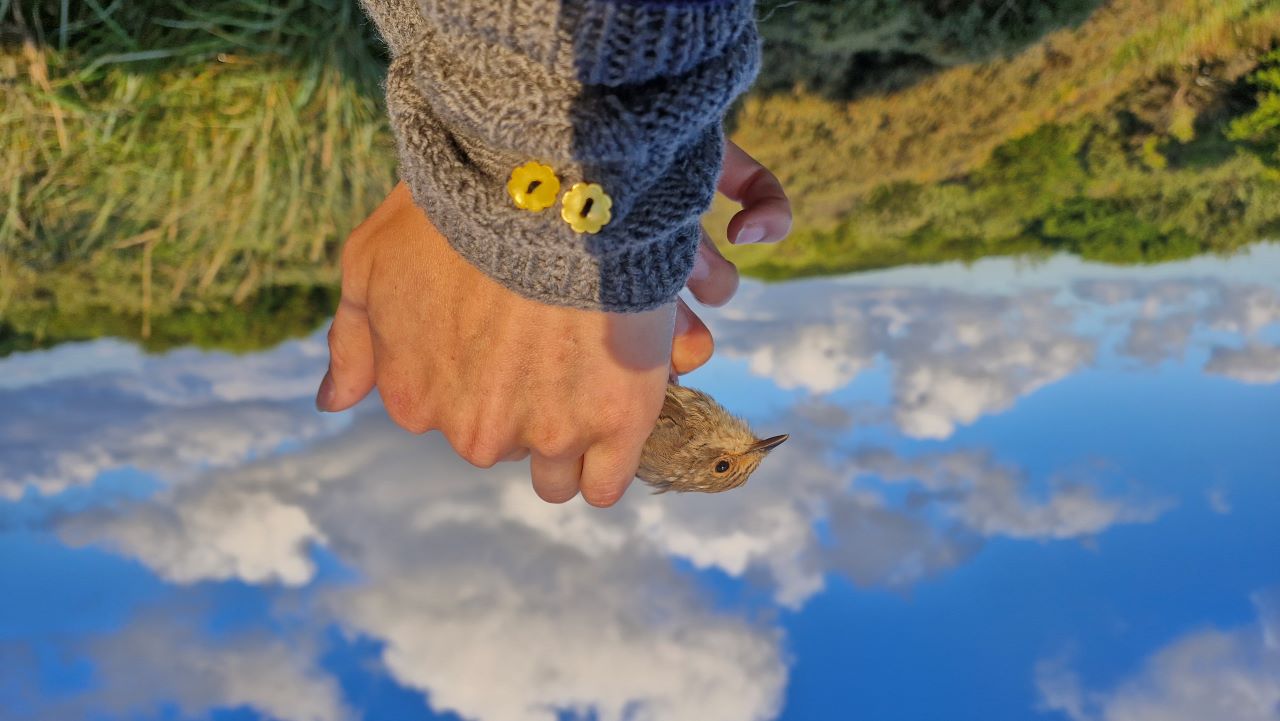
The above photo shows a spotted flyctacher (Grå Fluesnapper).
In one of the nets we also had a beautiful male emperor dragonfly (Stor Kejserguldsmed). Not quite a feathery bird, but very cool to see up close, as they are one of the largest dragonfly species in Europe! Luckily it was easy to free from the net, and then rested on my hand for a quick photo before flying away.
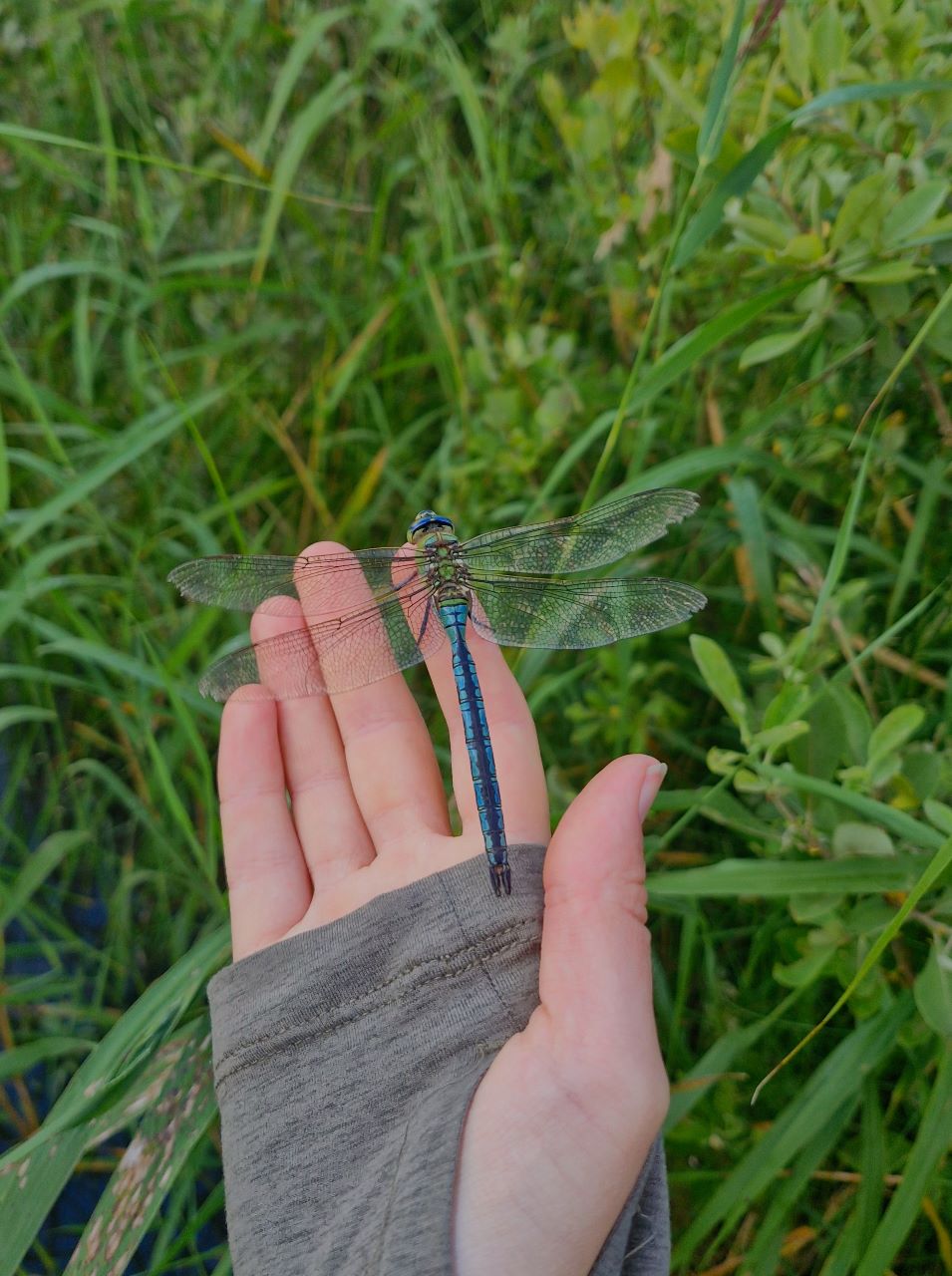
This ringing session was also joined by several visitors. It was the last session for our guest Kirsten, who has provided a helping hand all week, which we’re very grateful for. It was nice to catch a crested tit (Topmejse) for her final session, as this is one of her favourites. We were also joined by a young boy from BirdLife Denmark’s youngest member group: the Eagle Club, as well as some visitors with children from Switzerland. It’s always nice to be able to show these birds to children and inspire the future generation, as many of us volunteers started our bird journeys the exact same way!
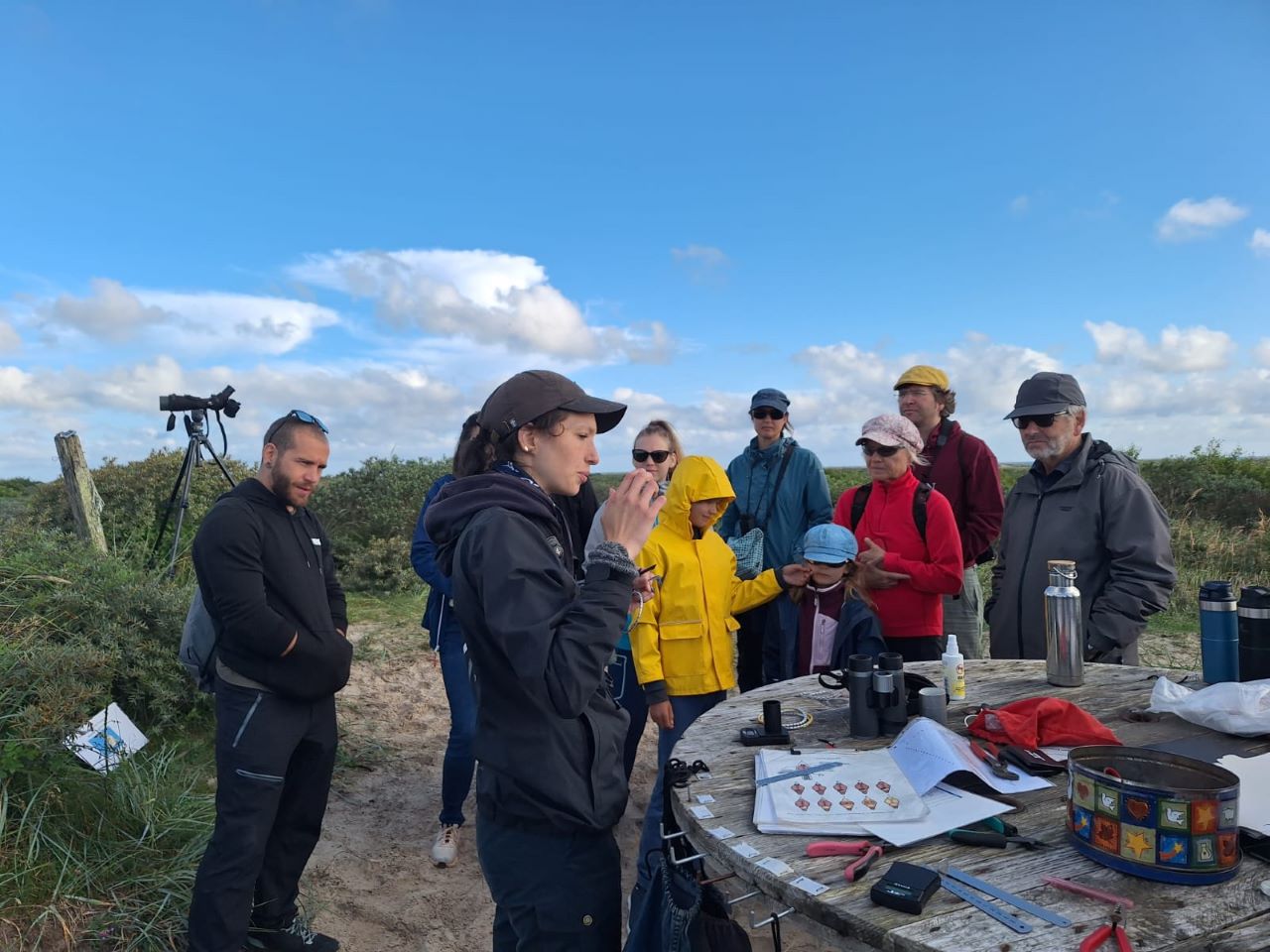
Meanwhile, Joe was on observations with Knud Peterson, as Lucas was busy seeking penduline tits (Pungmejse) in Aalborg, before saying goodbye to James. The highlight of Joe and Knud’s session was three great skuas (Storkjove), which came close to shore while chasing gulls. They were also able to read several lesser black-backed gull (Sildemåge) and greater black-backed gull (Svartbag) colour rings, so we look forward to finding out the history of those birds.
We have a busy day planned for tomorrow, with the usual standardised ringing and observations, as well as a moult strategy workshop from Simon to develop our skills and knowledge, which we're all looking forward to.
Ringing (Kabeltromlekrattet)
Lille Gråsisken - 4
Grå Fluesnapper - 1
Gærdesanger - 1
Rørsanger - 2
Topmejse - 1
Rørspuv - 1
Munk - 2
Gransanger - 5
Total: 17
People at the station: Rosa Hicks, Asia Kane, Joe Zeno, Lucas Corneliussen, Simon S. Christiansen, Kirsten Bregn, Lisa Vergin
Link to today's observations from observers in the area.
Wind and Rain Cancel The Plan
We knew it was coming. The strong wind picked up the evening before and we could see rain clouds headed our direction, but we hoped they would pass. They did not. Regardless the station woke up at 4 AM and waited and hoped, checking the radar forecast for a slimmer of hope the weather would pass. Once again, it did not. Every hour I would get up and check the forecast, look out the window and check the radar. It did not pass. After a while the crew went back to bed and slept in for a few hours.
Simon arrived at the station at around noon for a quick meeting and we discussed what needed to be done around the station, the upcoming moult session we were planning and other miscellaneous tasks. Around 2 PM, Simon took James and I to the train station so we could catch our train to Aalborg (not to fret readers, I am back tomorrow). Sadly, we did loose a fellow stationer, James departed today back to the Connecticut. We did get to go see the breeding Eurasian Penduline-Tits (Pungmejse) in Aalborg though, that was a nicee consolation. We will miss you buddy - have a safe trip home. CT Forever!
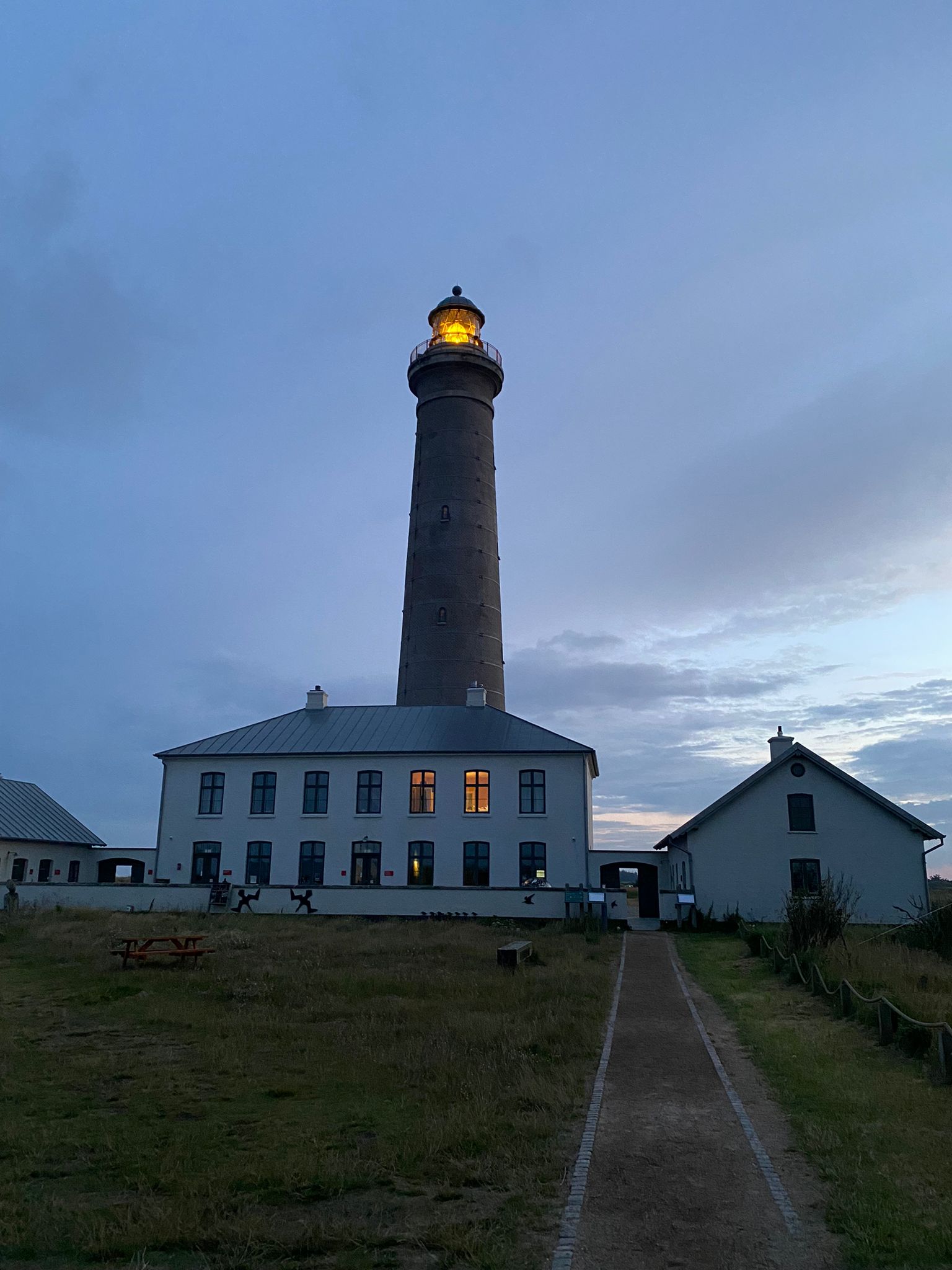
People at SKAF: Lucas Corneliussen, James Leone, Rosa Hicks, Joe Zeno, Asia Kane, Simon Christiansen, Kirsten Bregn
A family gathering
Hello everyone!
Today was a beautiful day for ringing birds. This was my first-time ringing. Rosa, Asia, Lucas, and I got up early to set up the nets for ringing. We set our nets open at 4:30 in the morning and began to get equipped at Kabeltromlen for ringing any birds that flew into our nets. We were happily surprised to hear from the observers that there was a Crested Lark in the parking lot. Lucas and I ran down after the nets were opened and observed the bird in the middle of the lot.
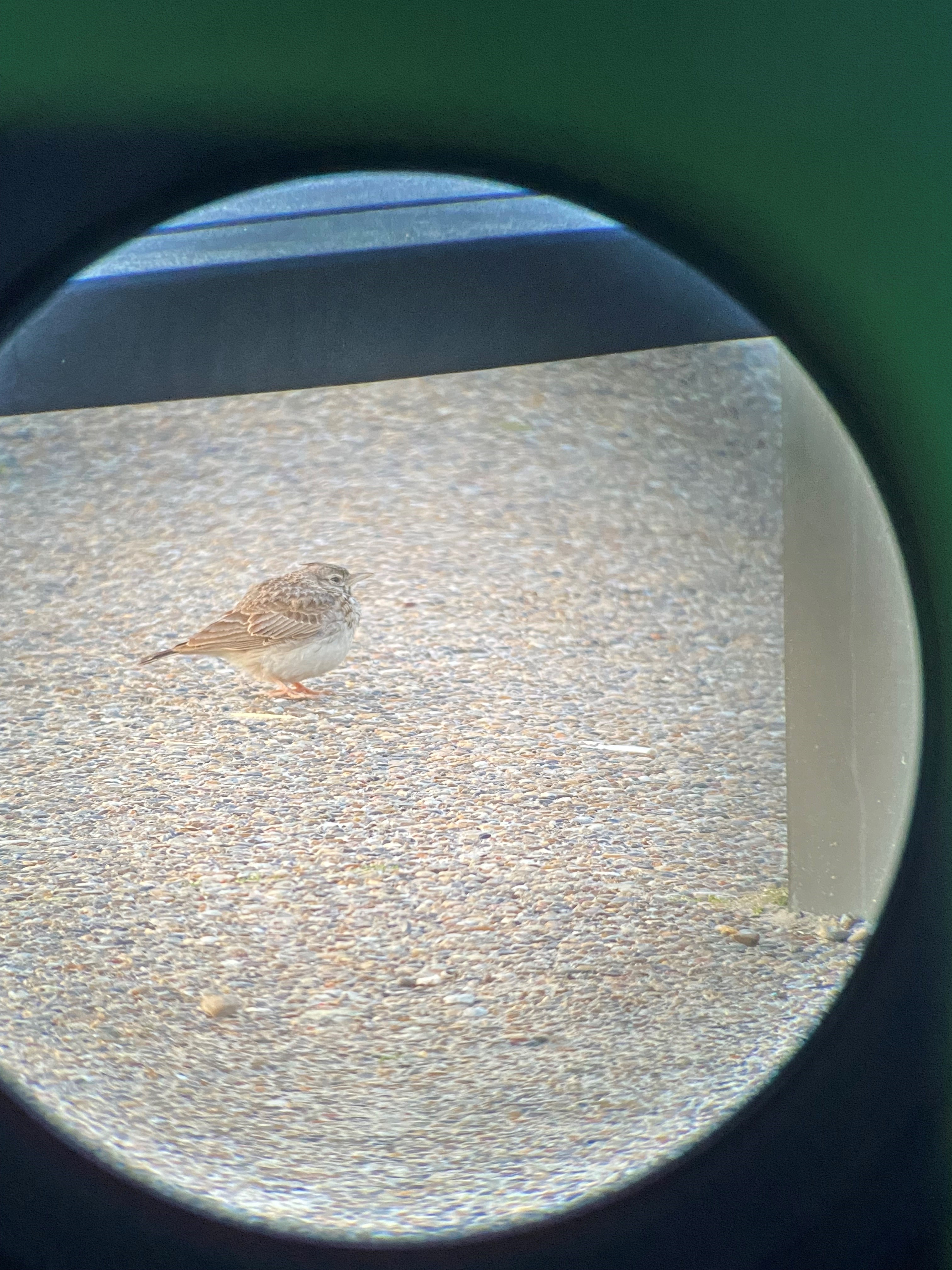 Toplærke (Crested Lark), Grenens P-plads
Toplærke (Crested Lark), Grenens P-plads
The first few net checks in the day were slow, with a couple Chiffchaff (Gransanger) being the solo species for the first portion of the ringing. After a couple of net runs the activity began to pick up as we ringed Common Whitethroat (Tornsanger), Lesser Whitethroat (Gærdesanger), and Reed Warbler (Rørsanger). The highlight of the day for the ringers came on the last run as Lucas and I encountered a family of five Great Tits (Musvit). Although these small passerines enjoy biting the hands of ringers as they are extracted from the nets, they brought some excitement to the end of a long morning of ringing. Three of the Great Tits that we caught were recaptures from Skagen!
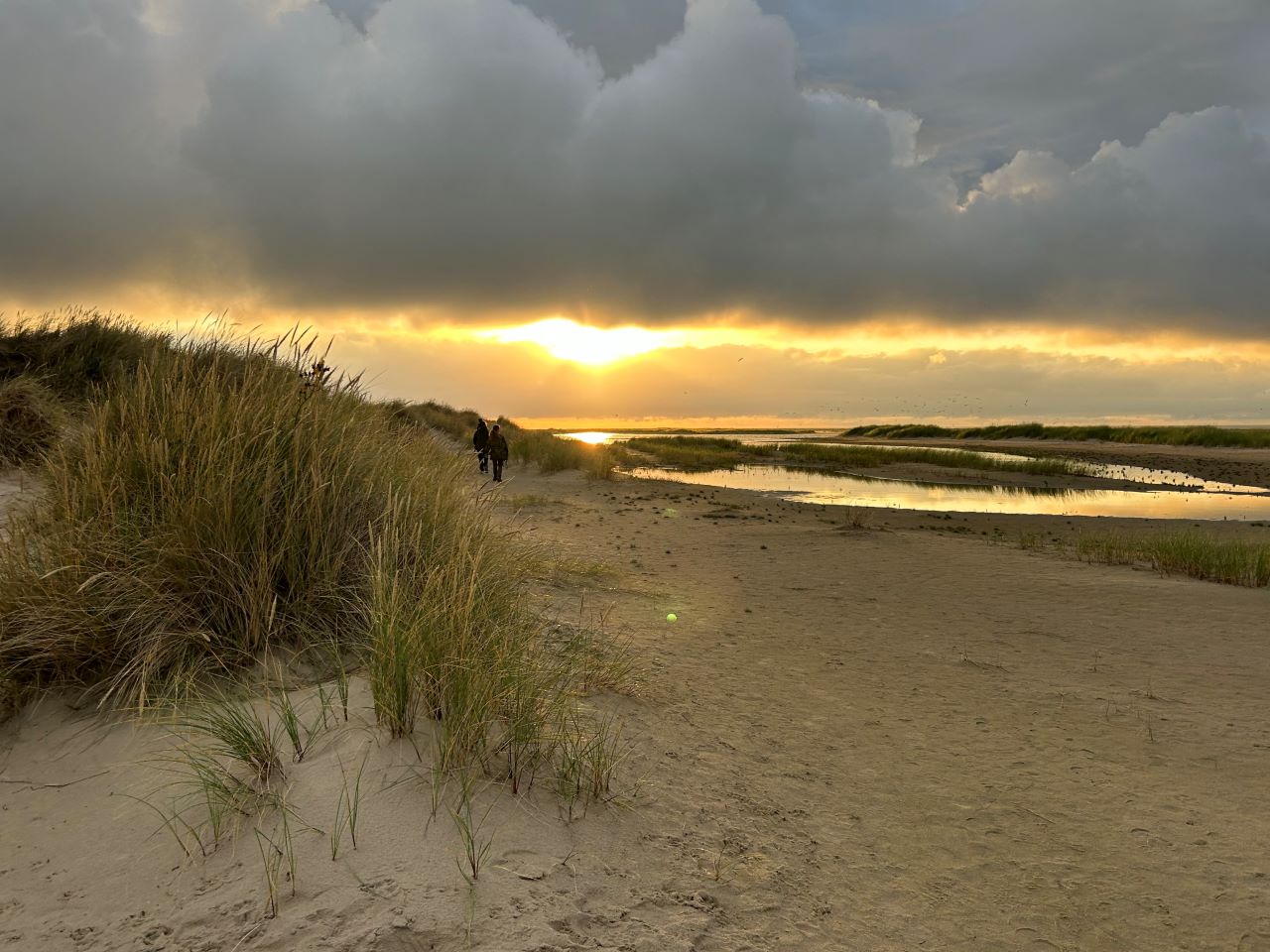 Grenen in the morning
Grenen in the morning
The observers, Ragnar and James, went out to World’s End 3 just before sunrise to observe wader and seabird migration along the coast. Highlights for them included a little gull on the beach, a flock of European Golden-Plovers, a Black Guillemot, a Razorbill, and a probable Pomarine Jeager.
Later in the day, Rosa visited Skagen Klitplantage and observed 16 Honey Buzzards on the way, a positive sign for raptor migration.
With inspiration from Rosa’s Honey Buzzard observation, James and Lucas set out in the afternoon to look for Red Kites and Common Crane, with success viewing both species. Along the way they also picked up Eurasian Nuthatch, Carrion Crow, and a probable Dunnock.
The weather looks to be interesting the next couple of days and we are excited to see what birds the winds will bring in!
Link to observations in the Skagen area in Dofbasen from today
Ringing (Kabeltromlen)
Common Chiffchaff (Gransanger) – 7
Common Whitethroat (Tornsanger) – 2
Lesser Whitethroat (Gærdesanger) – 1
Blackcap (Munk) – 2
Great Tit (Musvit) – 2
Total: 14
3 Nightjars caught and ringed
Hello everyone!
In the early hours of the morning, the volunteers were hard at work checking the nets for Stormsvale (Storm Petrels) and Natravn (Nightjars). As usual, there was a good turnout of interested local people and the lively atmosphere kept us all in high spirits. Seán also came over from Aalborg to join us for the night, and we were very grateful for his help checking the nets as it allowed the rest of us to get some sleep. Mette brought her delicious cakes again to help us keep going, and everyone at the station appreciated it!
Like last time, no Storm Petrels were caught. However, we did catch 3 Nightjars early in the morning, 2 adults and 1 juvenile. We were able to age the adult male as a second-year bird. This was a new species for some, and everyone enjoyed seeing these unique birds up close. With the birds in the hand, it was possible to see details such as the bristles around their beaks and the distinctively shaped toes that they use to comb them.
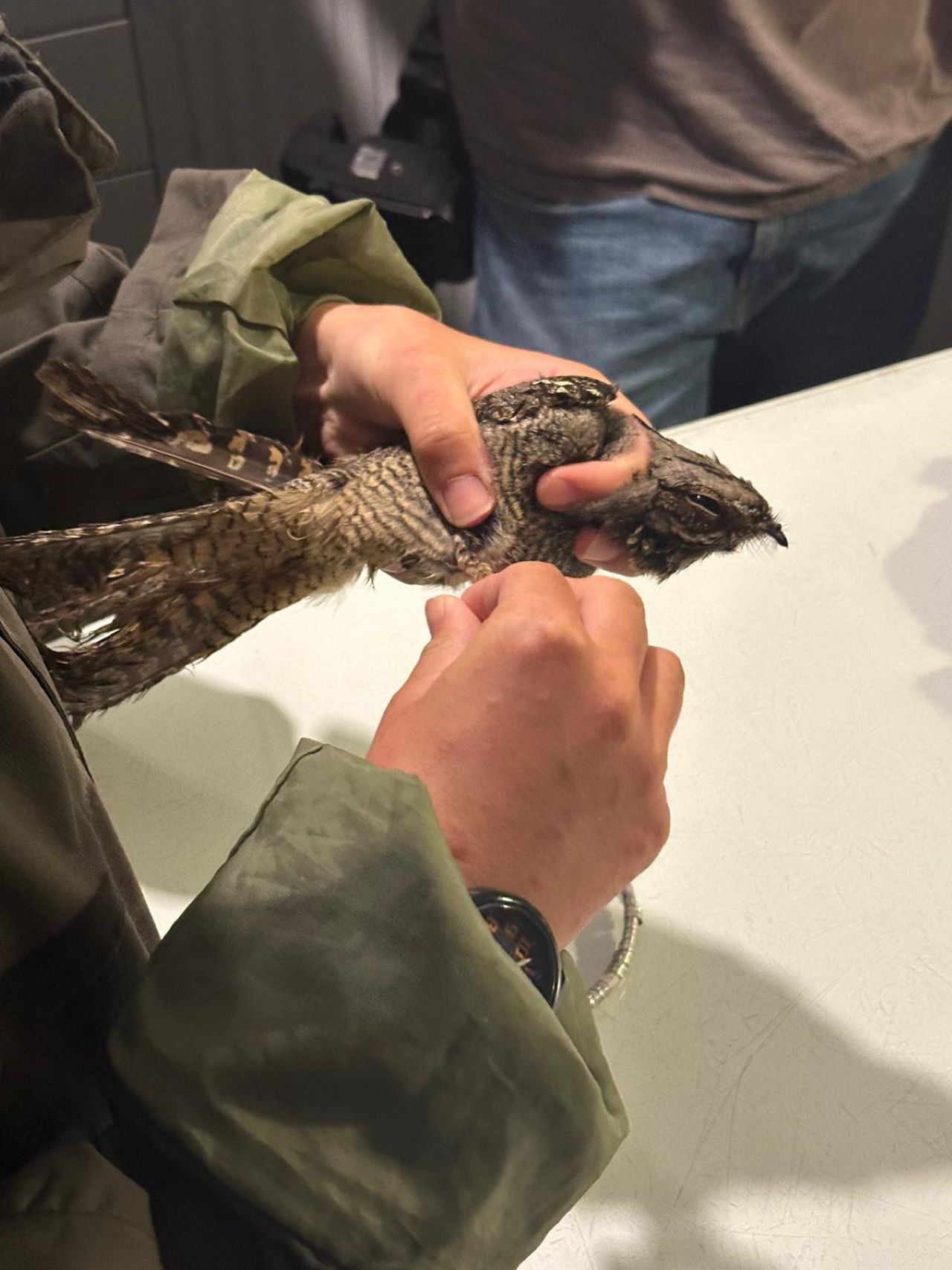
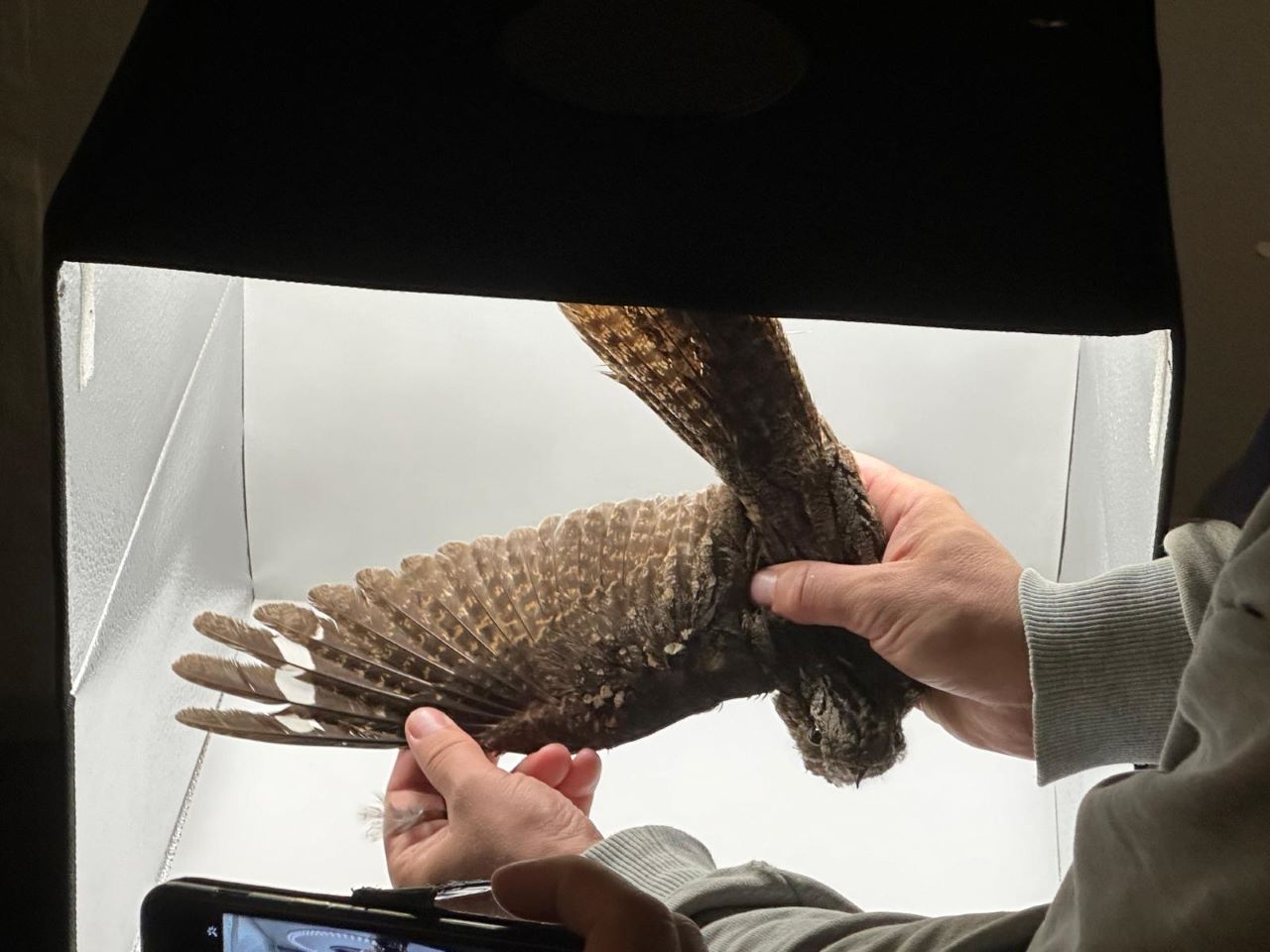
After the Nightjars had been ringed, Rosa and I headed straight to Kabeltromlen to open nets. We had a slow morning of ringing, but we did catch a male Rørspurv (Reed Bunting) which was a nice highlight. We also managed to change an old net, which was necessary as the old one had a large hole in it. We were joined in the ringing by our keen guest Kirsten and an interested family – the two young boys especially liked being able to see birds in the hand.
While we were ringing, James and Ragnar were carrying out observations. Highlights included Storkjove (Great Skua), Topmejse (Crested Tits) and 2 Toplærke (Crested Larks) – the first ever double record for Grenen!
When the ringing was over, we opened the nets in the lighthouse garden for Lisa’s guided tour. Then most of us decided to have a rest after a very early morning. In the evening, Lucas, Rosa, James, Ragnar, and I headed out to the dunes and saw a Krumnæbbet Ryle (Curlew Sandpiper). These beautiful birds are in their breeding plumage at this time of year, and often stick out among the Almindelig Ryle (Dunlins) when foraging in the mud.
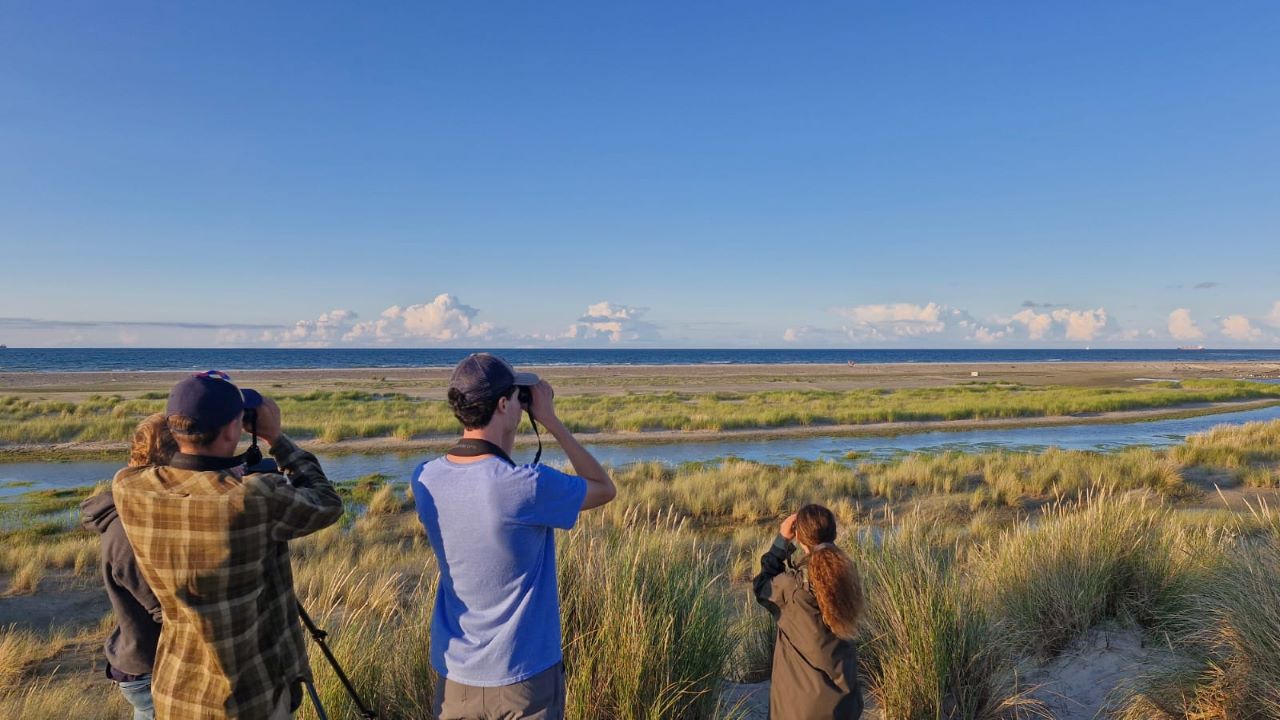
Tomorrow we will be ringing again at Kabeltromlen. After 2 slow days, we will see if the number of birds picks up.
Ringing (Kabeltromlen)
Gærdesanger (Lesser Whitethroat): 1
Gransanger (Chiffchaff): 7
Munk (Blackcap): 2
Musvit (Great Tit): 2
Tornsanger (Common Whitethroat): 2
Total: 14
Ringing (Fyrhaven)
Natravn (Nightjar): 3
People at the station: Ragnar Smith, Joe Zeno, Alfred G. Geckler, Asia Kane, Rosa Hicks, Lucas Corneliussen, Seán Walsh, Simon S. Christiansen, Mette M. Christensen, Kirsten Bregn, James Leone
A slow build up
A slow build up
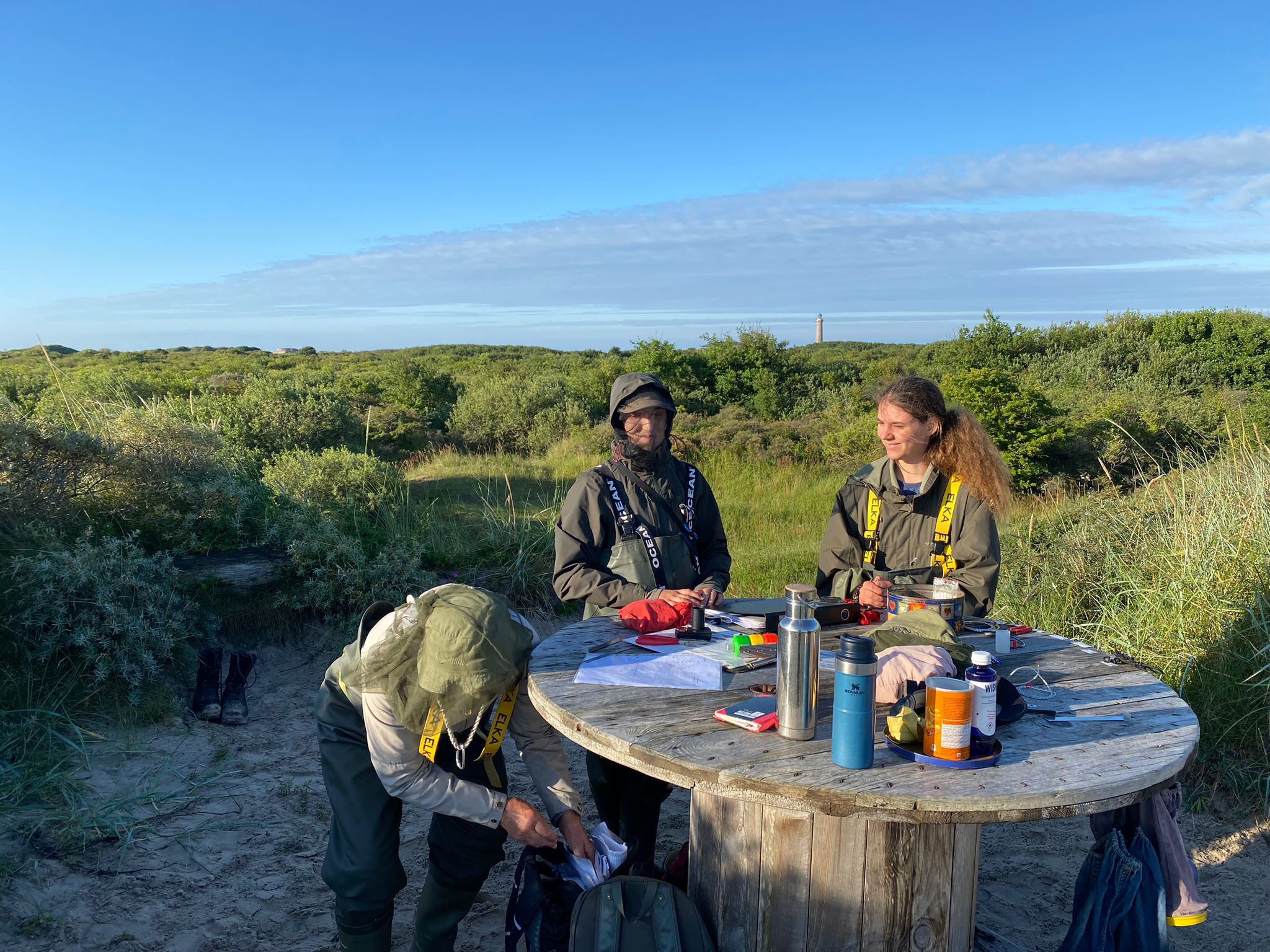
Another day, another dollar, we woke up early and the ringers went to Kabeltromlen while me and Joe went to World End 3 to do some migration counting. The weather was much better than yesterday, no rain, light cloud cover but some wind, and very early we saw some fulmars (Mallemuk), so we knew it would be another good fulmar day. Otherwise, there wasn’t much migration, though we had Green Woodpecker (Grønspætte) 1k that ended up migrating northeast. Later we were joined by the young birder Alfred, I helped him getting on some fulmars that were migrating as it would be new species for him, and there were two Black-throated Divers (Sortstrubet Lom) a Carrion Crow (Sortkrage), also both new lifers! Skagen always delivers. Later in the morning we had the first raptor in the shape of a Red Kite (Rød Glente) 1k doing a migration attempt and at 0914, right before the standardized counting stopped, we had the highlight of the day: a very nice Great Skua (Storkjove) migrating northwest, an uncommon summer visitor in Skagen, though we will see more of them later in the season (hopefully). After the standardized count, me, Joe and Alfred first went to the Sandormesvinget to count terns, gulls and waders and Alfred got another lifer in the shape of a Little Stint (Dværgryle) and we had Grey Wagtail (Bjergvipstjert) calling. After that, the last task at hand before we could go back was to go to the Cormorant Lake (Skarvsøen) to count cormorants (Skarv). It ended up being quite the trek with all mosquitos, horseflies and humidity, but we survived and mission accomplished and we went back to the Lighthouse and Alfred, happy with all his new lifers, got picked up by his mom. Thanks for a nice day Alfred!
Kabeltromlen had a more quiet day with the highlight being a nice Water Rail (Vandrikse), otherwise nothing much. They also spend the time maintaining the vegetation so we are ready for a hopefully action-packed and exciting autumn season, when the migration picks up!
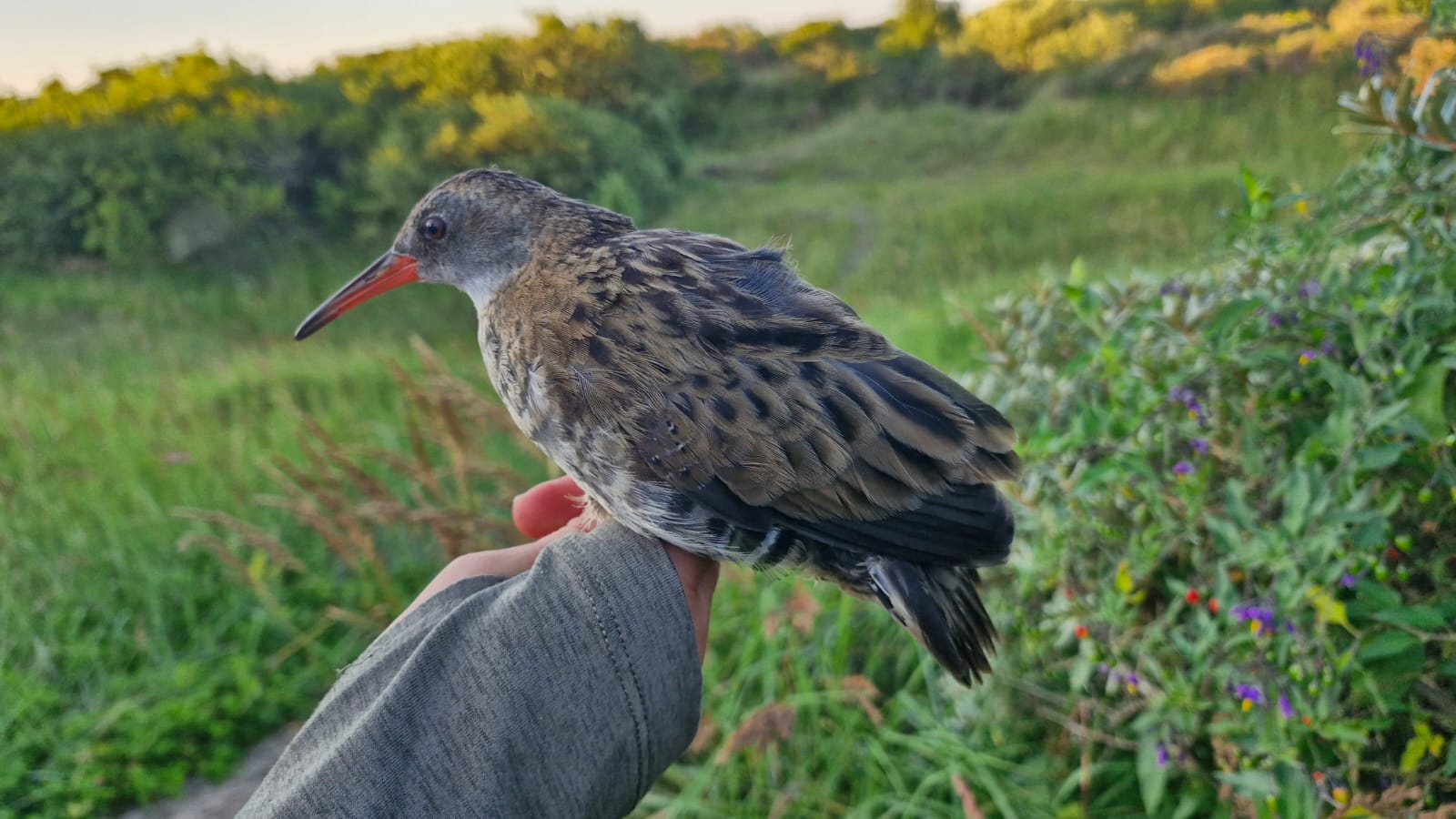
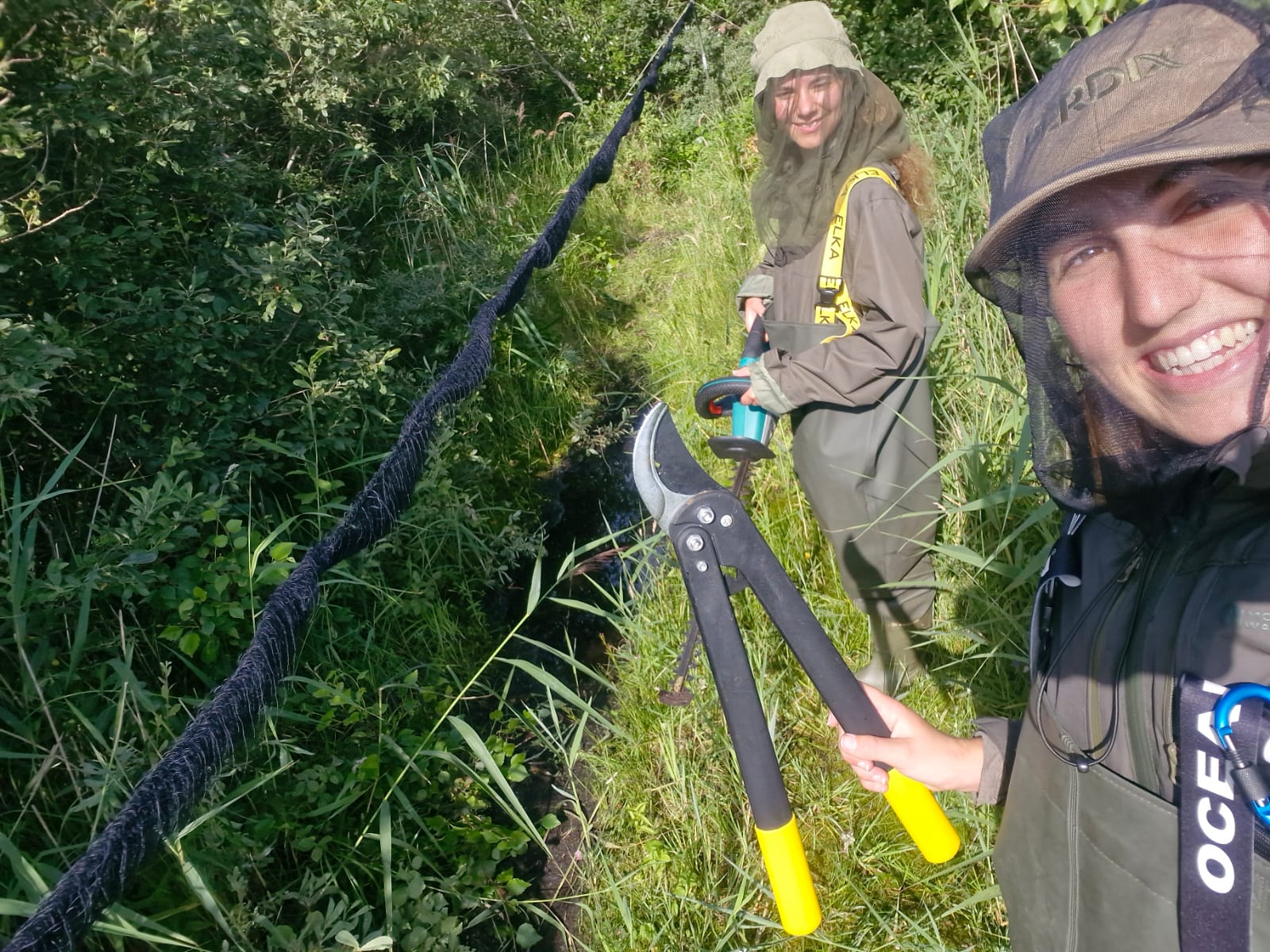
Otherwise the down time at the Observatory was spend napping and accomplishing some of the daily tasks and at around dinner time Simon picked up Sean Walsh who will be doing some storm petrel catching, and picked up Lucas and his friend James who will be staying with us for some time and we were joined by Mette who will be sleeping here also in the hopes of seeing a European Storm Petrel (Lille Stomsvale).
Now the nets have been put up and in a short time we will start doing playback with storm petrel calls and we are going to put up a moth trap, and a bunch of other birdwatchers will be joining us in the hopes of us catching a storm petrel. Fingers crossed, I know I will as I still need as a lifer.
Ringing (Kabeltromlen)
Water Rail (Vandrikse) – 1
Chiffchaff (Gransanger) – 1
Kærsanger (Marsh Warbler) – 2
Blackcap (Munk) – 3
Lesser Whitethroat (Gærdesanger) – 1
Lesser Redpoll (Lille Gråsisken) – 1
Total: 9
People: Ragnar Smith, Joe Zeno, Alfred G. Geckler, Asia Kane, Rosa Hicks, Lucas Corneliussen, Sean Walsh, Simon S. Christiansen, Mette M. Christensen, Kirsten Bregn, James Leone
Light bird-fall and heavy rainfall
Hi!
You may have noticed a new name! I’ve recently joined the volunteer team until mid October and have been greeted by some incredible locals – crested tits (Topmejse), honey buzzards (Hvepsevåge), icterine warblers (Gulbug), and the other volunteers of course, and some less incredible locals – the mosquitos (myg!!).
Heavy rain was forecasted today so no standardized ringing was conducted, however Ragnar, Joe, and I managed to get a few hours of migration counts before the heavy rain came. Highlights included the first mediterranean gull (Stor Sorthovedet Måge) and tufted duck (Troldand) of the year for the Station, 9 curlew sandpipers (Krumnæbbet Ryle), 2 migrating little ringed plover (Lille Præstekrave), a golden eye (Hvinand ), and a parasitic sea jaeger (Almindelig Kjove). Once the rain had cleared, Ragnor headed out again, while the rest of us caught up with some admin. He spotted an additional 72 dunlin (Almindelig Ryle), 10 curlew sandpipers (Krumnæbbet Ryle), 1 curlew (Stor Regnspove), and 1 whimbrel (Småspove).
In the afternoon we all headed to Gyvel Markerne to look for wading birds. We saw a range of species including wood sandpiper (Tinksmed), great egret (Søvhejre), common ringed plover (Stor Præstekrave), shellduck (Gravand), honey buzzard (Hvepsevåge), and northern lapwing (Vibe), the last three all being new species for Joe!
You might have remembered from yesterday’s blog that we went to check on a local nightjar (Natravn) brood which were nowhere to be found. Well, the mystery is solved as Simon reviewed the nightjar footage, revealing the brood’s unfortunate end…
Watch the fate of the Nightjars (Natravn) in the video:
Tomorrow’s weather looks less wet and so we’re hoping the nets will be back up for the standardized ringing, and the observers doing the migration counts stay dry too!
